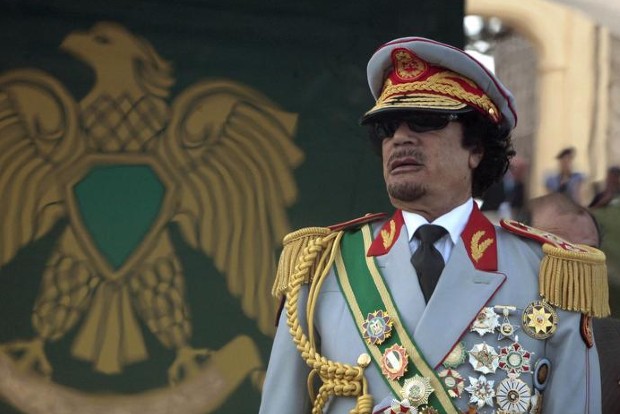Begin typing your search...
Libya’s unstable decade post Gaddafi’s death
We announce to the world that Gaddafi has been killed at the hands of the revolution,” Libyan National Transitional Council (NTC) spokesman Abdul Hafiz Ghoga said on October 20, 2011. “It is the end of tyranny and dictatorship,” he added.

In February 2011 Libyans, inspired by the uprising in neighboring Tunisia, had stood up to the regime of the dictator Muammar al-Gaddafi, who rose to power after the 1969 coup he had led. By March, the United Nations had given its approval for a military operation to protect the civilian population from reprisals by the regime. NATO launched attacks on Gaddafi’s military — significantly weakening the dictator’s forces.
Bloody fate
Gaddafi fled the capital, Tripoli. After months on the run, he was found in the city of Sirte, about 450 kilometers (270 miles) east of Tripoli. Surrounded by opponents, the “revolutionary leader” was caught when he tried to escape through a sewer. The rebels promptly and violently killed him; a photo of the bloodied corpse went around the world.
By the beginning of the uprising against Gaddafi’s regime, food prices were rising and youth unemployment was extremely high, said Hager Ali, a research fellow at the Hamburg-based GIGA Institute for Middle East Studies who specialises in Libya. From the start, there were demands for democracy, too, as well as calls for an end to human rights abuses. Libyans wanted an investigation into serious human rights violations such as the 1996 massacre at Abu Salim prison in Tripoli, in which an estimated 1,200-1,700 incarcerated people were killed. “This crime was characteristic of the period under Gaddafi,” Ali said.
People were giddily optimistic for a new beginning, but even then some observers urged caution. “The road ahead for Libya and its people will be difficult and full of challenges,” UN Secretary-General Ban Ki-moon said at the time. “Now is the time for all Libyans to come together.” He added: “Libyans can only realise the promise of the future through national unity and reconciliation.” That was wishful thinking, however, and, in 2014, the turmoil of the uprising led to a civil war. Gaddafi’s own power apparatus was very much to blame, Ali said. “He also bought protection from foreign mercenaries while keeping the lower ranks of the Libyan army out of power,” she added. The strategy led to rivalries that continued for years after the dictator’s death, in addition to conflicts of interest at regional levels. During the uprising, the various groups were briefly united by their intent to overthrow Gaddafi, but the alliances disintegrated after his fall. “There was no functioning civilian political arena in which differences could be worked out and negotiated,” Ali said. Several elections also failed to produce national unity.
Failed state
State power disintegrated, and, soon, there were two governments: one in Tripoli, the other in Tobruk, in the far east of the country. To protect or enforce their interests, an increasing number of foreign countries intervened in the civil war, including Russia, Turkey, Egypt and the United Arab Emirates (UAE). Mercenary troops financed by foreign states remain in the country to this day.
Turkish President Recep Tayyip Erdogan tried to assert Turkey’s claims to gas reserves in the Mediterranean Sea by forming an alliance with the internationally recognised head of government at the time, Fayez al-Sarraj. Russia, Egypt and the UAE supported the so-called government-in-exile in Tobruk, which is linked to the militia commander Khalifa Haftar. Egypt in particular hoped the cooperation would help Libya get a grip on Islamist forces, especially the Muslim Brotherhood. Ten years after Gaddafi’s death, democracy, stability and independence from external powers are still a rather distant vision of the future in Libya.
Visit news.dtnext.in to explore our interactive epaper!
Download the DT Next app for more exciting features!
Click here for iOS
Click here for Android
Next Story



